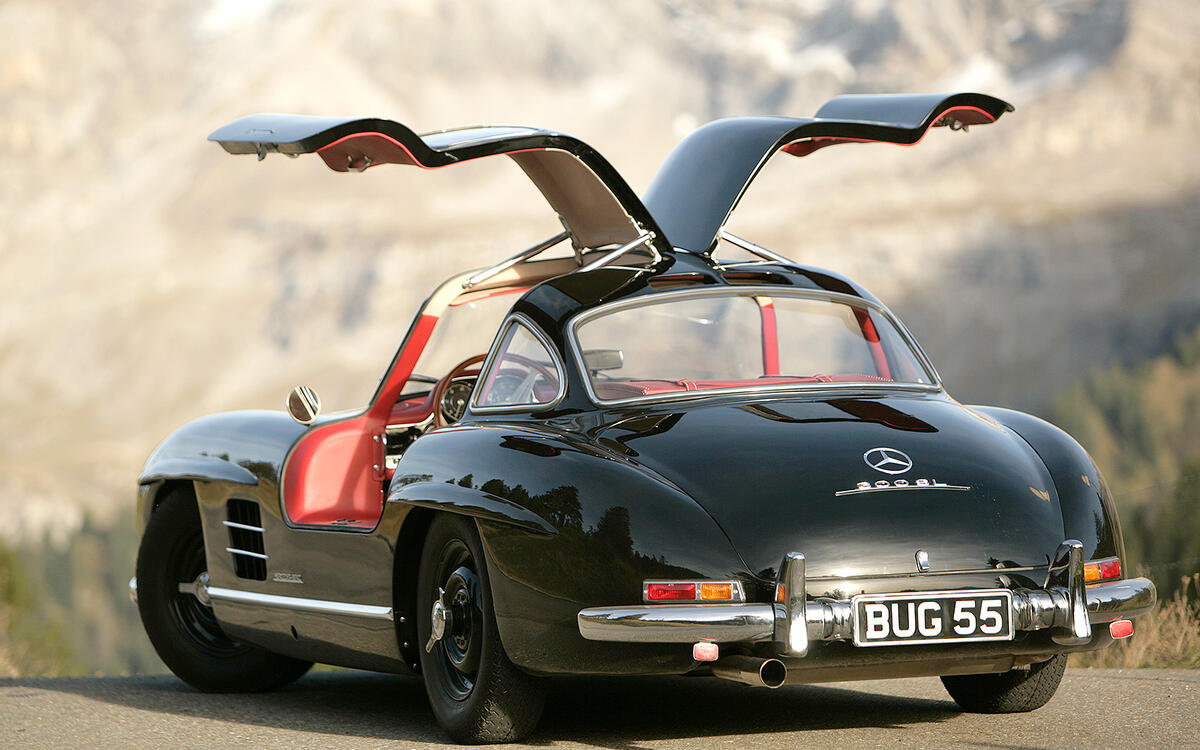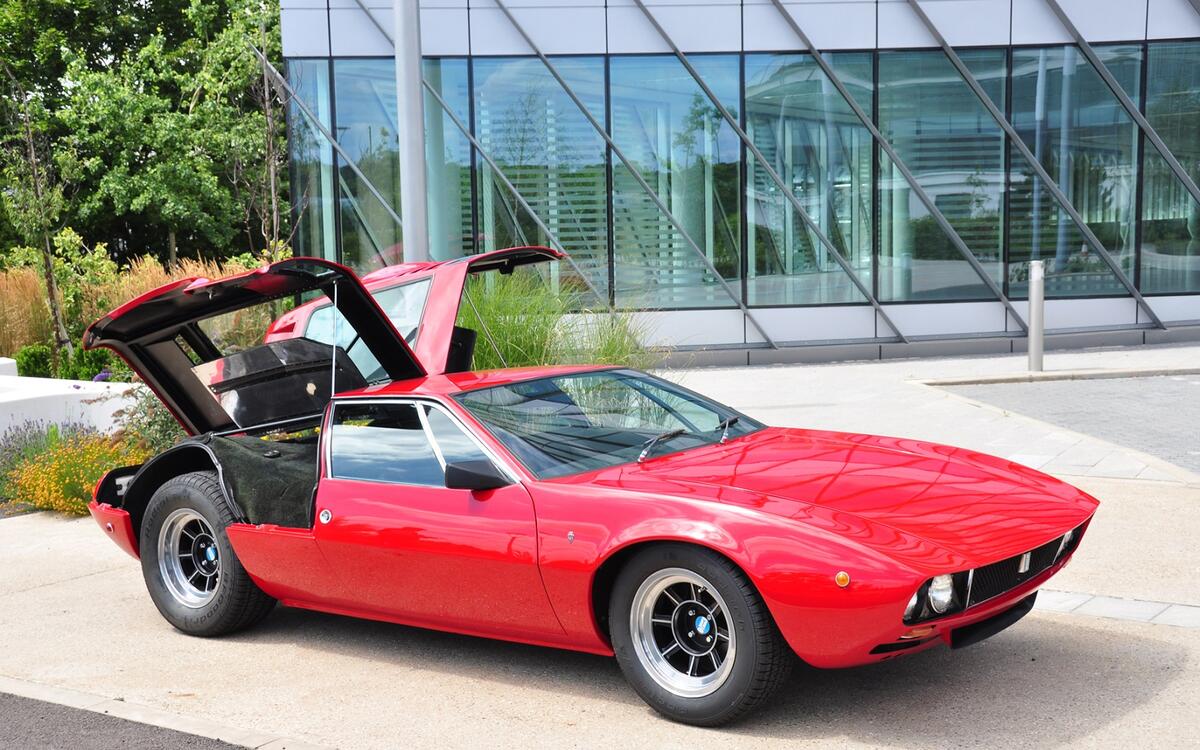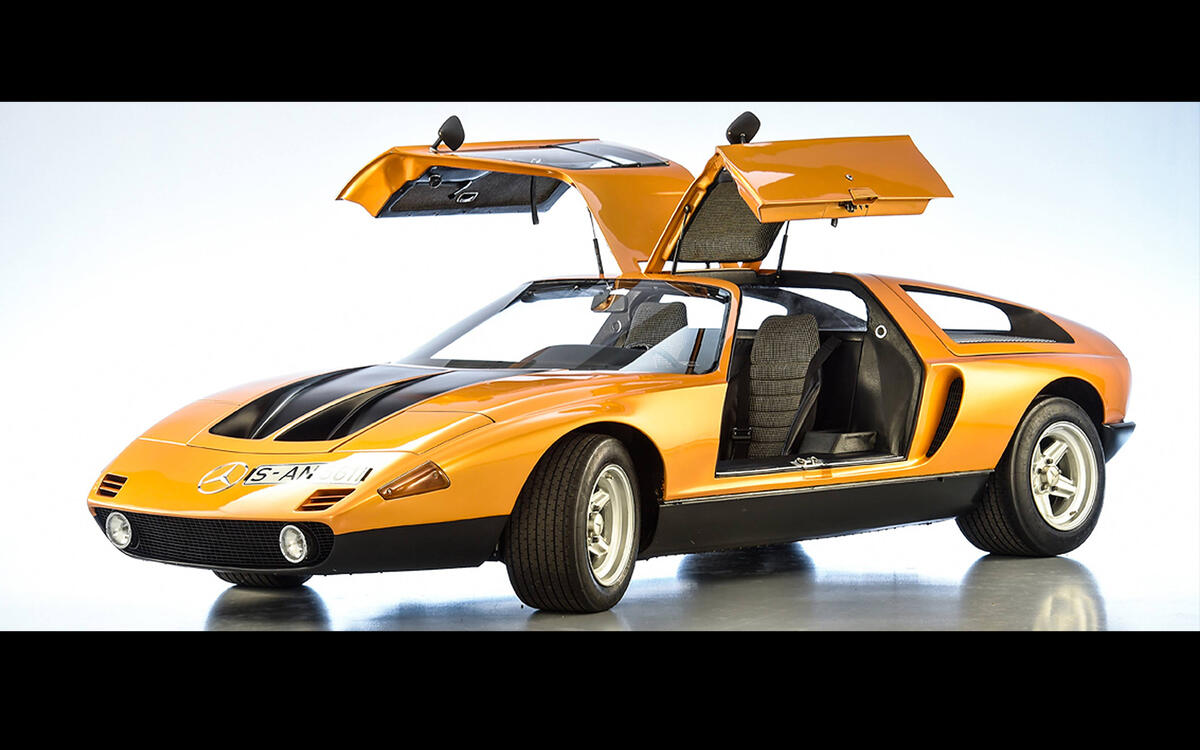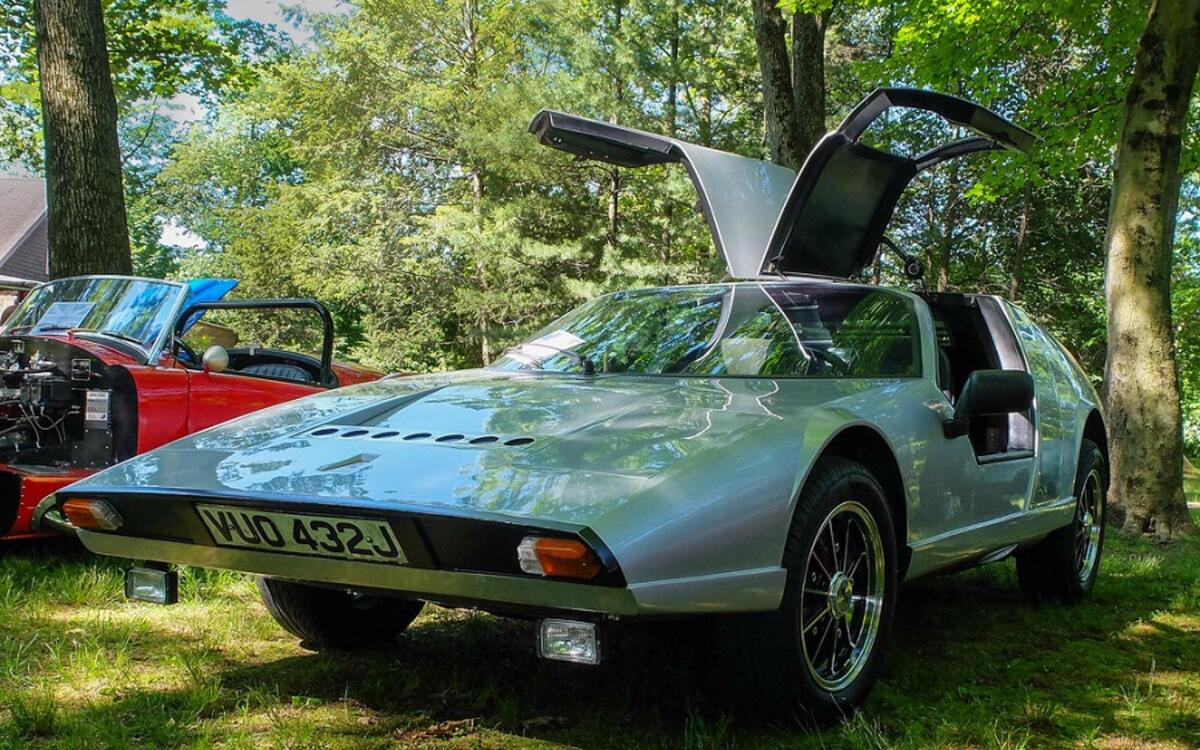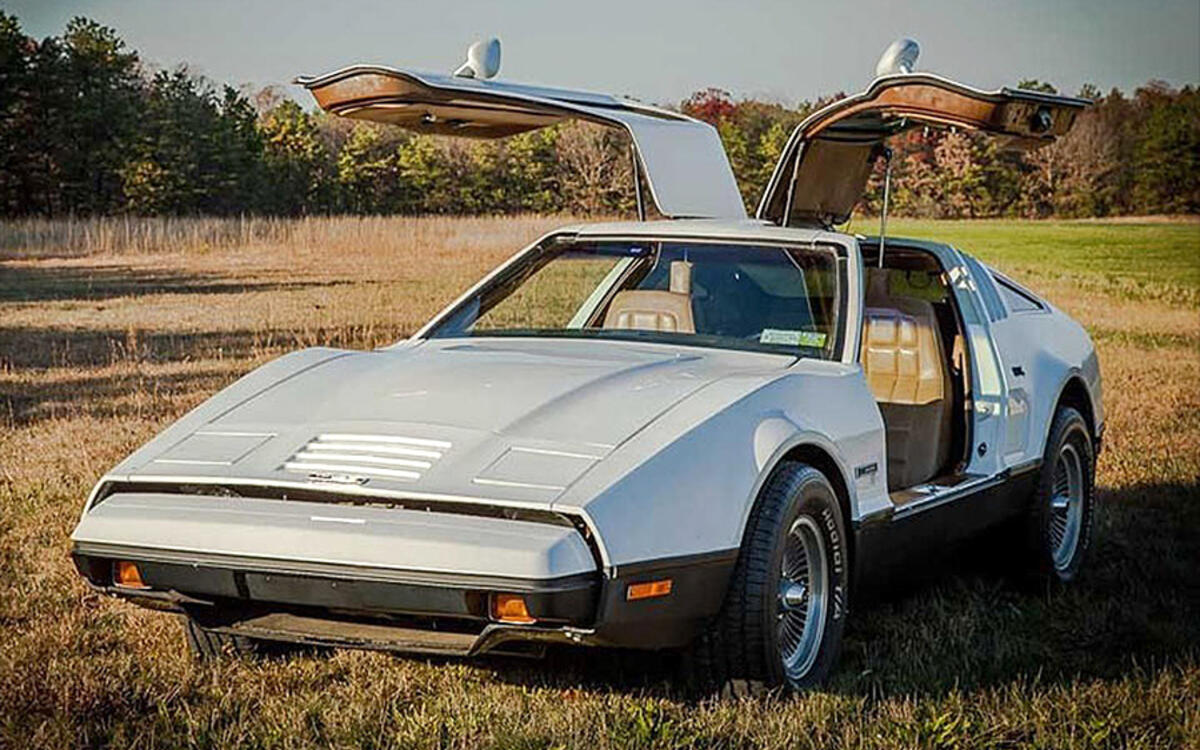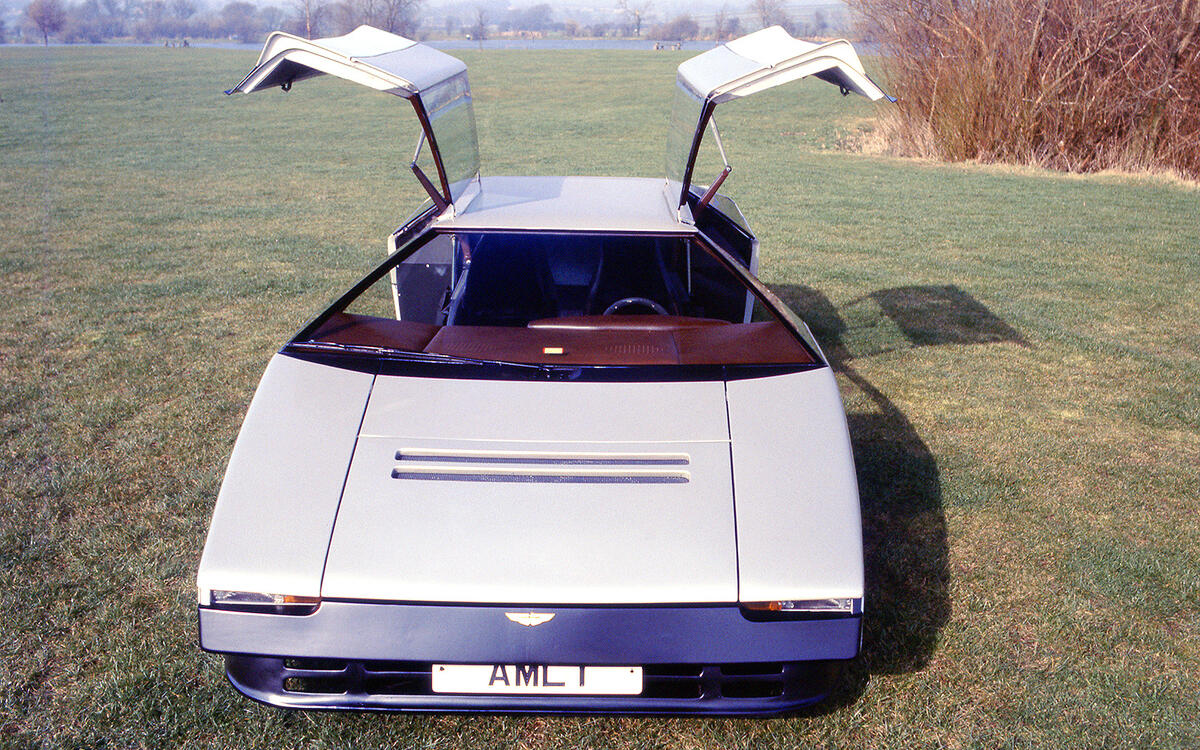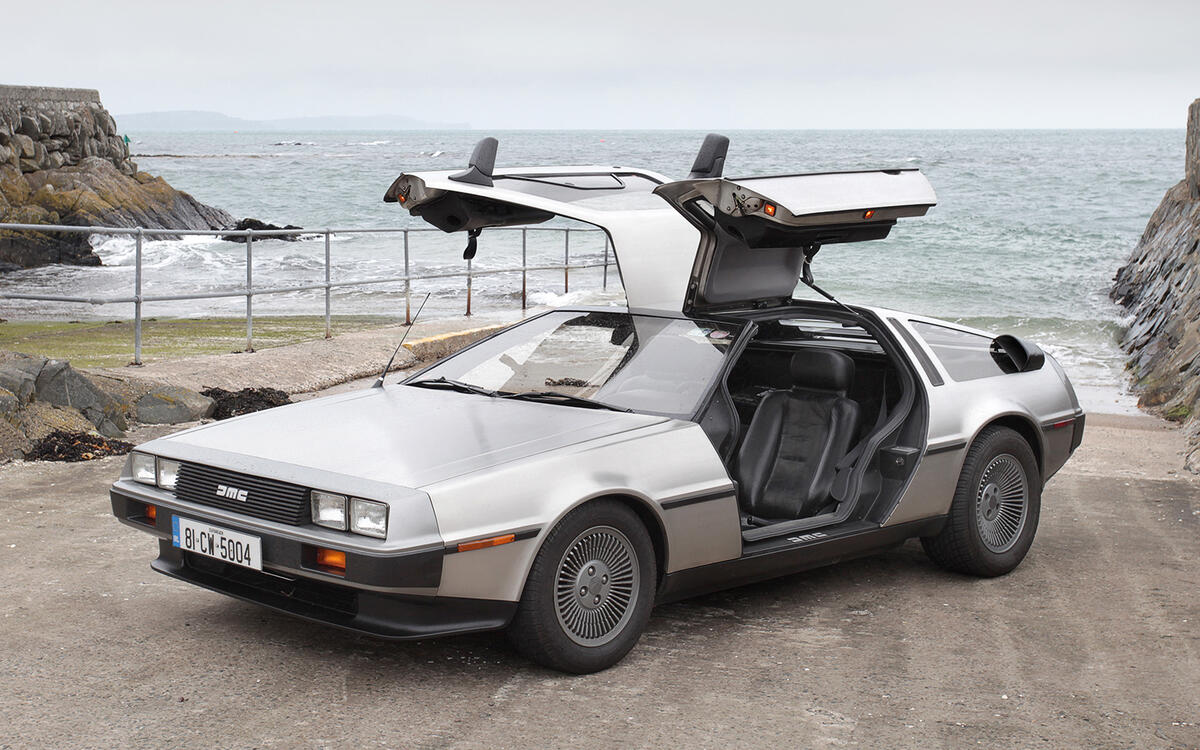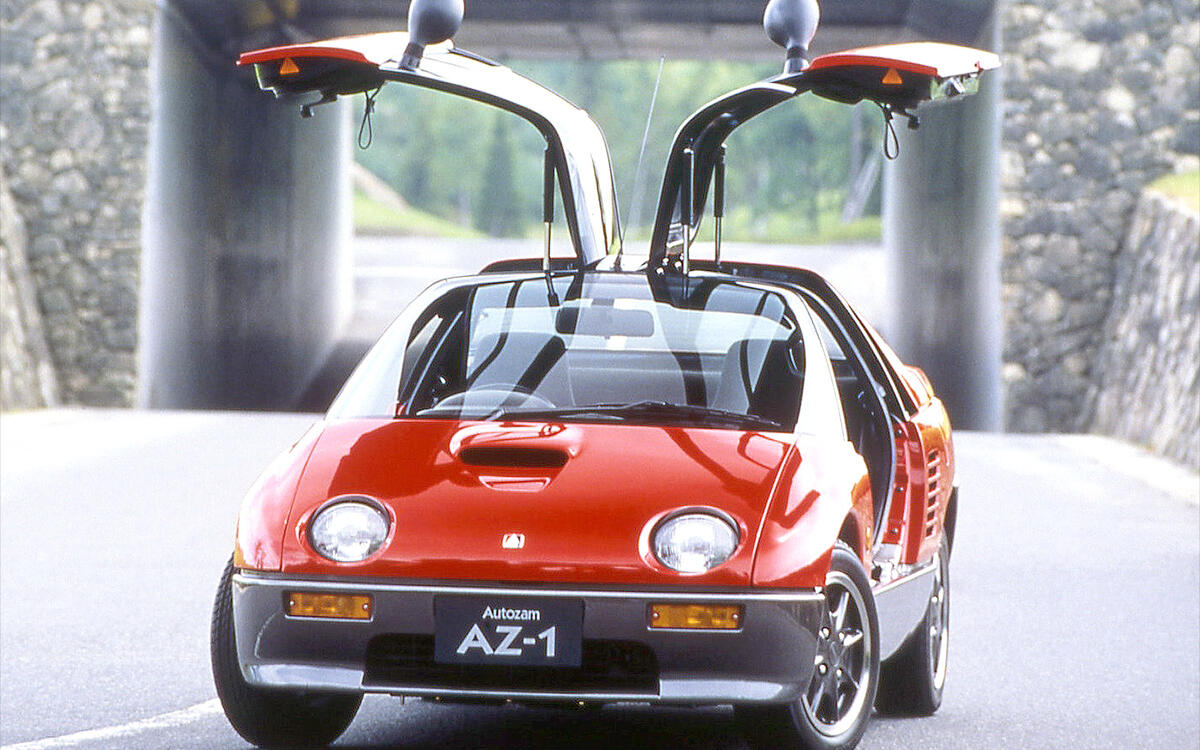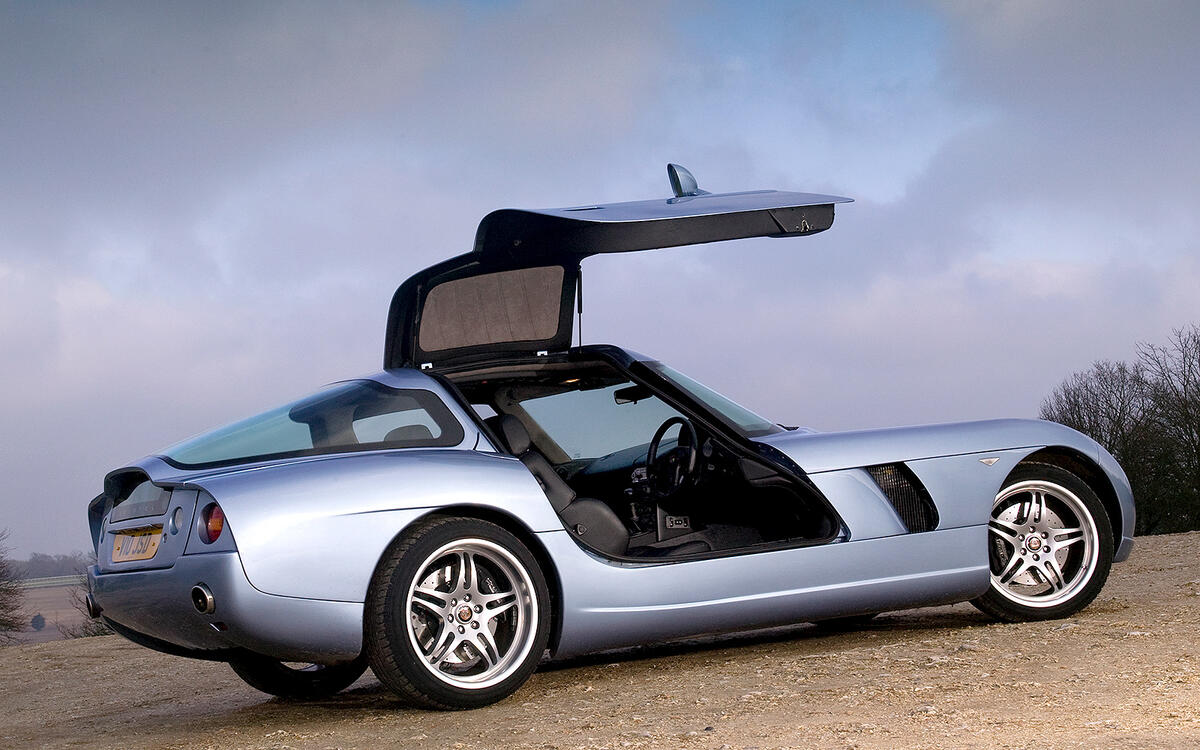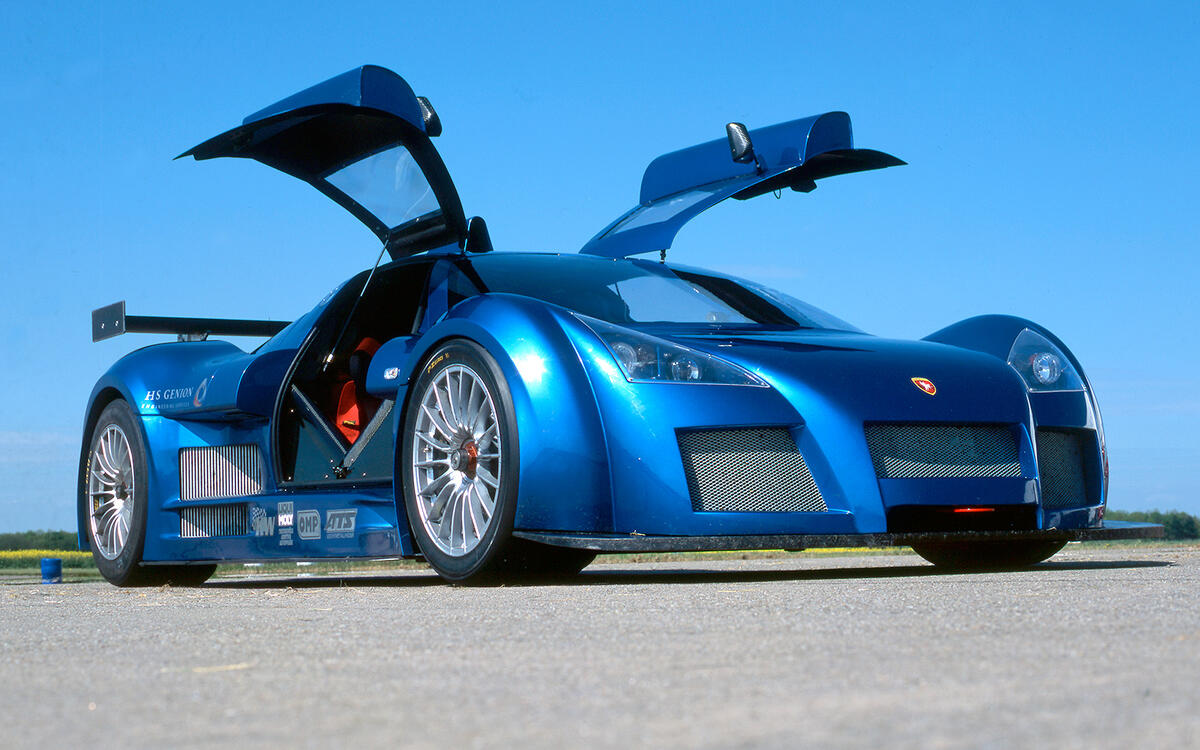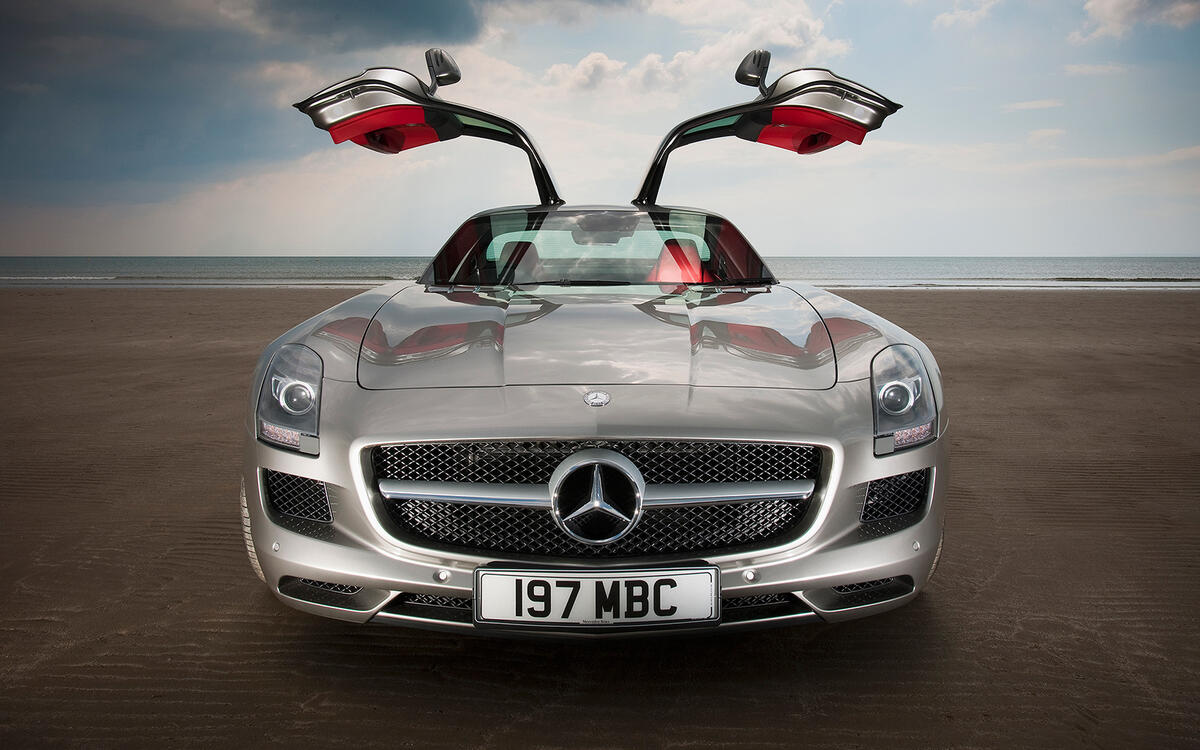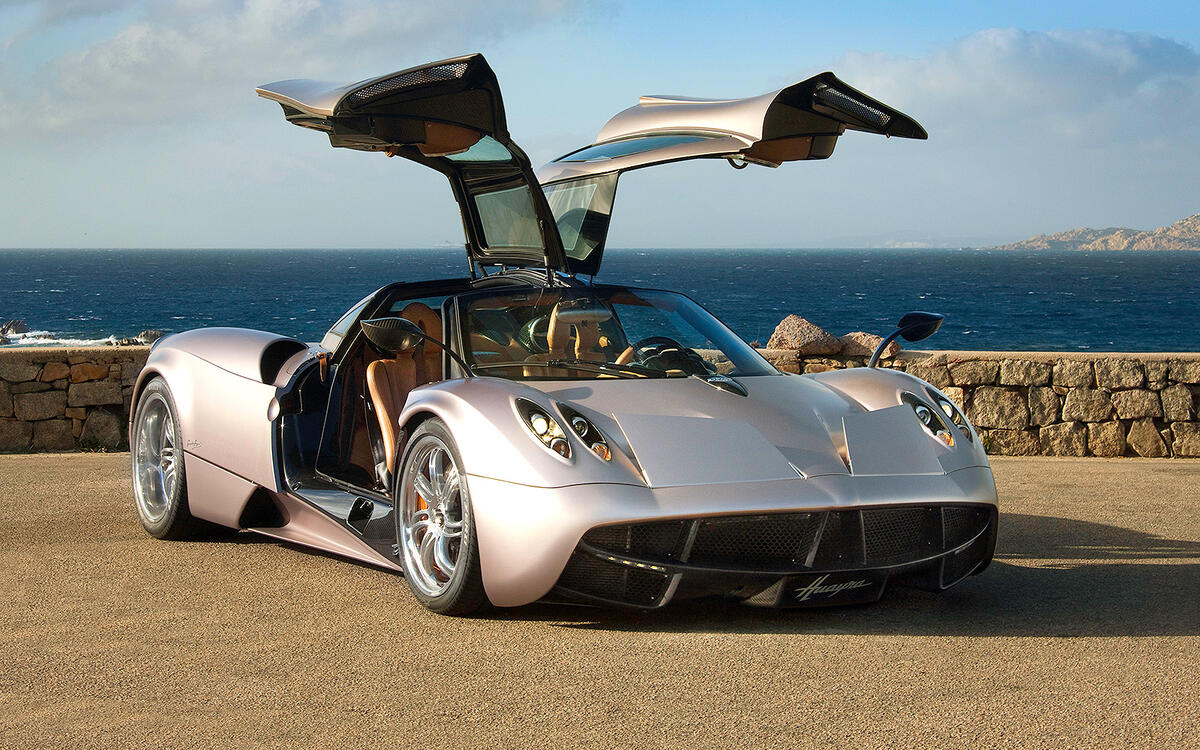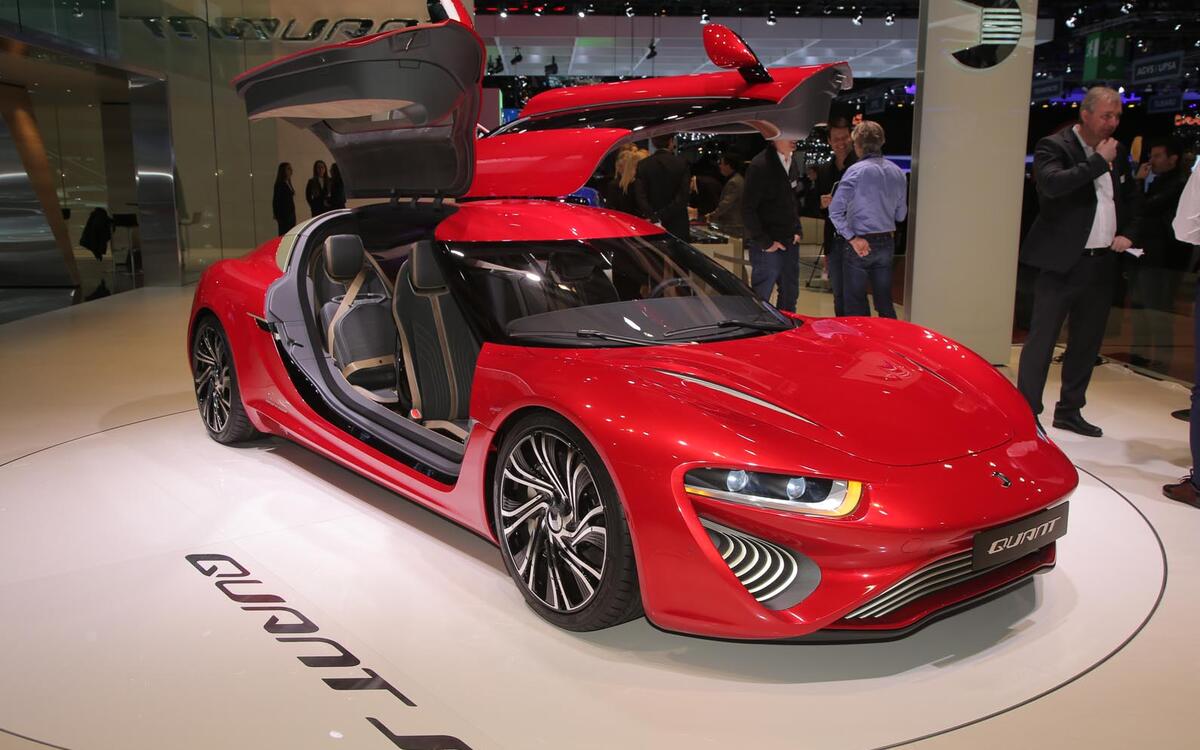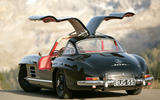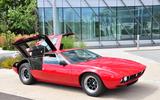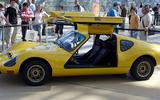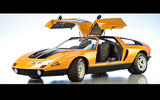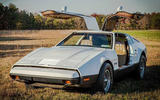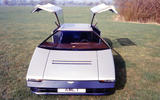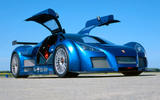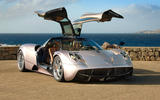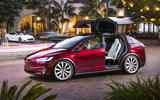 Slide of
Slide of
If you want to make a car as dramatic as possible, there are few better ways than to give it gullwing doors.
Ever since the eponymous Mercedes burst onto the market, gullwing doors have been a byword for automotive indulgence.
There have been some more humble applications for the gullwing door and they’ve not just been used to access the cabin.
Whichever way they’re used, a gullwing door is guaranteed to draw a crowd, so here are our favourite gullwing cars, ranked in chronological order...
 Slide of
Slide of
Mercedes 300SL (1954)
The Mercedes 300SL was never called ‘Gullwing’ by the factory, but it’s how this 1950s supercar is widely known now.
For good reason, the nickname stuck as it perfectly describes the Mercedes’ lift-up doors, which were needed to allow for the massive sill structures that give the car its strength.
However, the 300SL Roadster that followed the 1400 Gullwings produced had a more rigid body and came with normal, easier to use doors.
None of that put off buyers that included the rich and famous when the Gullwing was new.
Developed from Mercedes’ earlier racing cars, the 300SL enjoyed its own competition successes and there were 29 lightweight aluminium versions made for those who find the entry price to Gullwing ownership today a little too accessible.
 Slide of
Slide of
De Tomaso Mangusta (1967)
Why bother with gullwing doors when you can have a far more dramatic effect using this design for the engine cover?
That’s what De Tomaso reckoned when it came up with its first supercar, the Mangusta.
Hinged right down the centre of the car, these large panels lifted to reveal a 4.7-litre V8 and give excellent access for servicing work.
Glazed upper sections of the gullwing engine cover allowed passersby to marvel at your Mangusta’s motor, though they did little to aid rearward vision for the driver.
Around 400 Mangustas left the factory up to 1972 and the De Tomaso’s Italo-American roots mean it remains keenly priced compared to other exotica from the period with prices starting around £200,000.
 Slide of
Slide of
Melkus RS 1000 (1969)
It’s difficult to square Cold War-era East Germany and the production of a gullwing-doored sports car, yet that’s exactly what the Melkus RS 1000 manages.
The Melkus’ low-slung coupé body demanded doors that afforded decent entry and exit from the car, so gullwing items were the obvious answer and worked well with the sleek overall shape.
Underneath the glass fibre skin, things were just as surprising as power was provided by a 992cc two-stroke engine from a Wartburg.
Hardly the most glamorous of power plants, it benefitted from a wealth of two-stroke tuning knowledge from behind the Iron Curtain to have 68bhp and a top speed of 103mph.
 Slide of
Slide of
Mercedes C111 (1970)
Although it looked like a concept car, Mercedes built 16 C111s. Even so, it wasn’t a production car either as it was created to try out new technology and that included revisiting gullwing doors that Mercedes had first used on the 300SL sports car.
The C111 was the work of Friedrich Geiger (1907-1996) and the gullwing doors were a key part of the design.
They were included not so much from a technical standpoint but to make sure the car caught the eye of journalists at the various motorshows the cars were displayed at and guarantee plenty of column inches.
It did that very successfully, but a fuel crisis put paid to any notion of the C111 making production as the car used a Wankel rotary engine that was far from frugal.
 Slide of
Slide of
Siva 160 (1971)
Some of the most notable names in the UK’s specialist car industry had a hand in the Siva 160 and it was down to stylist Neville Trickett that it had gullwing doors.
He was commissioned by Jem Marsh to create a car for Marcos, but Marsh was not keen on the Hillman Imp base, so Jan Odor, the boss of Janspeed, stepped in to show the car off.
By the time the Siva 160 reached the road in production form, it was based on the Volkswagen Beetle platform.
This made it cheaper to build but less fun to drive and only 12 were made even if it was one of the best resolved specialist cars of its era thanks to those collective minds that made it happen.
 Slide of
Slide of
Bricklin SV-1 (1974)
The Bricklin SV-1 changed a great deal from its inception to production.
It started out as the brainchild of Malcolm Bricklin (born 1939), who wanted to build a car with gullwing doors that majored on safety (‘SV’ stands for safety vehicle), hence its energy-absorbing glassfibre bodywork.
However, by the time it went on sale in 1974, the only thing to survive the design process were those doors. The four-cylinder engine had given way to a V8 and the SV-1 was touted as a rival to the Corvette.
Sadly, the key design feature of gullwing doors used hydraulically-powered rams to lift their considerable 40kg (88lb) heft and that could take up to 12 seconds.
A single pump was used to operate the doors’ mechanism, which meant only one gullwing hatch could be opened at a time if you wanted to avoid over-straining the hydraulic motor. Just under 3000 were made before the company went under.
 Slide of
Slide of
Aston Martin Bulldog (1979)
Aston Martin took a radically different tack to its usual curvy coupés when it revealed the Bulldog.
Designed by one of the masters of wedge shapes, William Towns (1936-1993), the Bulldog featured gullwing doors as a necessity.
Normal doors would have been too long if they were to allow decent access to the cabin, so top-hinged doors were the order of the day.
This type of door freed up Towns to give the Bulldog a very pronounced angle to the side windows that helped give the car its trademark look.
Behind the cockpit lies a twin-turbo 5.3-litre V8 engine with 700bhp, which should have catapulted Aston to the front of the supercar field, but only one Bulldog was ever made.
Now coloured light green, it exists today and shows up occasionally at car shows in the UK.
 Slide of
Slide of
DeLorean DMC-12 (1981)
The DeLorean DMC-12 arrived to huge fanfare and it’s easy to see why thanks to its unpainted stainless steel bodywork and those amazing gullwing doors.
It looked every inch the supercar at a reasonably affordable starting price of £10,674 – around £41,000 in 2019 money.
While the doors could become saggy with age and need new hydraulic rams, things started to unravel for DeLorean long before this was ever an issue.
Performance was a problem due to the mild 130bhp power output of the DMC-12’s meagre Renault Douvrin 2.8-litre V6.
Handling was also not up to the looks, even if Lotus had tried its best to sort matters.
Add into the mix a recession and company boss John DeLorean (1925-2005) being accused of drug dealing and it all went wrong for DeLorean with only 10,000 cars sold globally.
 Slide of
Slide of
Autozam AZ-1 (1992)
Japanese Kei cars come in all shapes but just one size, so designers have to use some corkscrew ideas to make their car stand out.
This accounts for the gullwing doors of the Autozam AZ-1, a tiny coupé with hints of the Toyota MR2, Ford RS200 and even Ferrari F40 in its looks.
Those doors dominate the style of the AZ-1, which has a mixed parentage divided between Mazda and Suzuki, the latter providing the turbocharged 657cc three-cylinder engine.
Suzuki also sold its own version called the Cara in Japan and today values of this and the AZ-1 start at £10,000 ($12,850) for a tidy original model.
 Slide of
Slide of
Isdera Commendatore (1993)
Why have gullwing doors or gullwing boot lids when you can have both? That was the thinking that marked out the Isdera Commendatore 112i.
Large, thick section lift-up doors give good access to the two-seat cabin, while behind the two halves of the rear deck hinge down the centre line to give plenty of room for spannering the AMG-tuned 6.0-litre V12 engine.
The work of Eberhard Schultz and his team, the Isdera was designed and built with the cooperation from Mercedes.
While there’s no direct link between the two, there are similarities between the Isdera and Mercedes own CLK GTR such as the engine and lift-up doors. However, the Isdera is the rarer car as only two were ever made.
 Slide of
Slide of
Bristol Fighter (2004)
Things are rarely straightforward when it comes to Bristol Cars and so it was with the launch of the Fighter.
Originally intended to be made from aluminium, the core structure ended up in steel, but the gullwing doors remained and were crafted from carbonfibre to keep them light and easy to lift and lower.
Bristol’s roots in aircraft manufacture remained apparent in the Fighter and those snug-fitting doors.
There’s also something of the aero engine in the capacity of the 8.0-litre V10 engine sourced from the Dodge Viper that gave 0-60mph in 4.0 seconds and a 210mph top speed.
However, none of this was enough to rescue the Fighter as just 13 cars were built in a seven-year production life.
 Slide of
Slide of
Gumpert Apollo (2005)
Roland Gumpert (born 1944) had a singular vision for his perfect car and that included a pair of race-inspired gullwing doors for the resulting Apollo.
While they may look like they've been taken straight from a Le Mans racer, the doors and the rest of the Apollo were designed primarily as a road car that could be driven to track days.
Entry to the Apollo’s cockpit is not as tricky as in some gullwinged cars, though the cabin is snug.
When you fire up the Audi-derived 4.2-litre V8 with twin turbos, there's a peak of 641bhp available, enough to see the Gumpert from 0-60mph in 2.9 seconds.
The Apollo has now been replaced by the Intensa Emozione, but the gullwing doors are still there.
 Slide of
Slide of
Mercedes-Benz SLS (2010)
Mercedes tried to recapture the svelte image of the original Gullwing with its super coupé launched in 2010.
Yet other than the doors, the SLS owed much more to the previous Mercedes SLR McLaren, including the raucous V8 engine and sledgehammer performance.
Even so, the biggest talking point with the SLS is those doors. You can’t fail to notice them when they’re raised and the dainty door handles that pop out are a real delight.
The doors themselves are quite light to lift, helped by a gas strut, but can be a stretch to fetch down as Mercedes refused to add electrical assistance as it would add weight.
As for getting in and out, that’s just like the original Gullwing and a mix of athleticism and ungainliness.
 Slide of
Slide of
Pagani Huayra (2012)
Following on from the sensational Zonda was always going to be a difficult second album for Pagani, but the Huayra is more than up to the task.
Arguably more sleek than its predecessor, the Huayra is also more powerful, quicker and easier to drive fast. But it does stick with gullwing doors.
In a show of surprising practicality for a car of this persuasion, the Huayra’s gullwing doors lift up high to reveal a low sill that makes getting in and out very easy.
There was even talk of the Roadster version coming with gullwing doors too, but it was eventually launched with conventional front-hinged doors.
 Slide of
Slide of
Tesla Model X (2015)
Tesla would rather you call the Model X’s rear doors ‘falcon wing’ but, let’s face it, they’re gullwings.
It’s unusual to find this type of door on a car aimed at families rather than supercar owners, but the advantage is brilliant access to the rear quarters of the Model X.
There’s also the wow factor every time you open them and the car can even be programmed to give a little dance combo along with the electrically opening front doors.
Perhaps more relevant is the size of the rear doors when parked in tight spaces as, even with Tesla’s double hinge system, they can need quite a lot of space to unfurl without knocking into cars parked alongside.
 Slide of
Slide of
Quant F (2015)
There’s a lot to discuss about the Quant F from nanoFlowcell, not least how a car company from tiny Liechtenstein came up with a gullwinged wonder like this.
Derived from the company’s e-Sportslimousine, the F sports car has four seats that demand very long gullwing doors to offer sufficient room to get in and out for all four passengers.
Along with the bodyshell, the Quant F’s doors are formed from carbonfibre to make them as light as possible and avoid their size becoming a problem when opening and closing them.
They’re also electrically operated, using energy from the car’s flow cell battery storage technology that uses two ionic liquids to generate power.
Nothing says ‘look at me’ louder than emerging from a car with gullwing doors. They’ve been around for a long time – these are the most notable
Advertisement


